Mysterious timber crib disappears from Canal Park beach
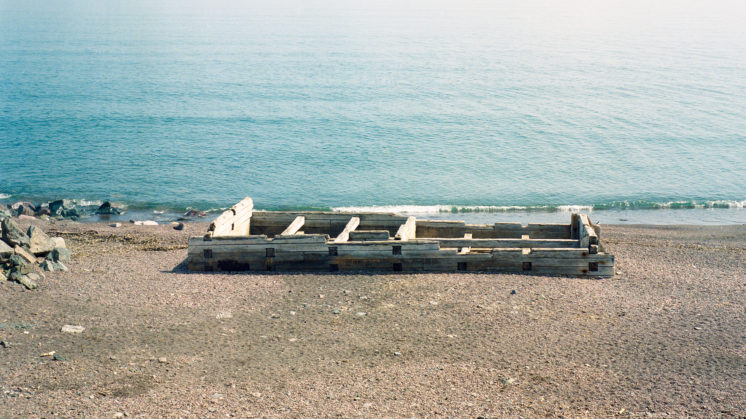
A large timber crib, shown here in 2010, was beached for almost 15 years. City officials said the structure was removed and demolished as part of the recently completed Lakewalk improvement project. (Photo by Kip Praslowicz)
A mysterious wooden structure that had been shipwrecked for years on a Canal Park beach has disappeared following a year-long project designed to improve a popular Duluth walking trail battered by Lake Superior storms.
City officials said the timber beam crib — about the size of a three-car garage — was removed and demolished during the recently completed $16.8 million Phase III Lakewalk reconstruction project. The crib washed ashore in 2006 and became part of the trail landscape that includes other historic structures like Uncle Harvey’s Mausoleum and the former Endion train station.
“The crib had become a safety hazard, which is why the city chose to remove it,” said Duluth Public Information Officer Kate Van Daele in an email. “The structure had been lit on fire consistently prior to the closure of the (Canal Park) section, which made the integrity of the structure not safe to be used.”
Van Daele said removal costs were wrapped into the Phase III clean-up costs.
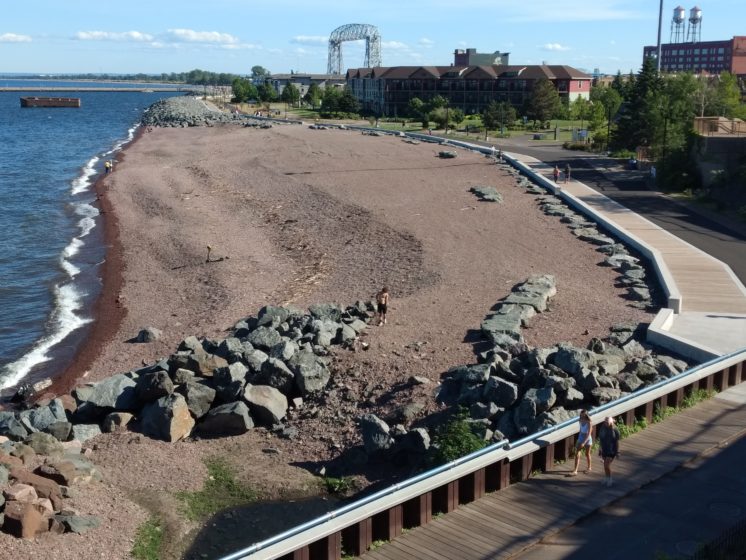
From 2008 to 2020 the historic crib was located near the pile of rocks in the lower left corner of this recent photo, which shows the repaired Duluth Lakewalk. (Photo by Mark Nicklawske).
The crib was constructed out of old-growth, 12-inch-by-12-inch wood beams, some more than 30-feet-long and held together with large iron spikes. Historians believe the structure was built in the 19th Century, filled with rocks and sunk just off the Lake Superior shoreline to support an industrial area in the fledgling city.
Duluth historian and Zenith City Online publisher Tony Dierckins was disappointed to learn the crib was removed from the Lake Superior shoreline.
“That cribbing was an extremely significant piece of Duluth history and it was a gift to have it wash up at the very corner of Lake Superior,” he said in an email. “To me it’s particularly sad that the city had it removed not only without public notice or public input about its future, but it did so in 2020.”
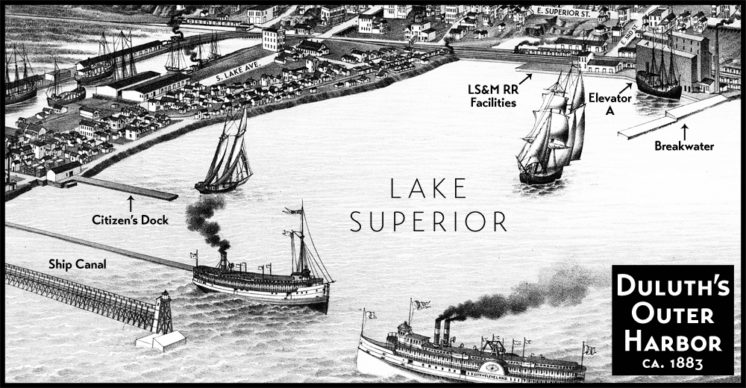
The former Lake Superior & Mississippi Railroad facility was constructed on piers at the bottom of Third Avenue East. (Image courtesy Zenith City Online).
The city of Duluth was founded in 1870 making 2020 its 150th anniversary.
Dierckins said the cribbing was likely built more than 150 years ago as part of a long-gone historic outer harbor in Lake Superior. The structure most likely supported the Lake Superior & Mississippi Railroad’s first freight depot, warehouse and dock complex at the bottom of Third Avenue East. It also could have been part of nearby Grain Elevator A or used for a breakwater that stretched into the lake near the current Vietnam Veterans and Korean War memorials.
“Instead of celebrating Duluth’s and the Lake Superior and Mississippi Railroad’s 150th anniversaries, the city removed an important piece of their histories, something that could have been used to help engage people in the story of this remarkable place,” he said.
The old crib was not only historically valuable, but also worth a lot of money.
Lake Wood Designs owner Devin Garrett, who operates in Lincoln Park, said untreated old growth timber is rare and highly valued for its reuse as furniture, art material or home construction. He estimated the crib timbers were worth more than $20,000 wholesale and could fetch between $50,000 and $75,000 retail.
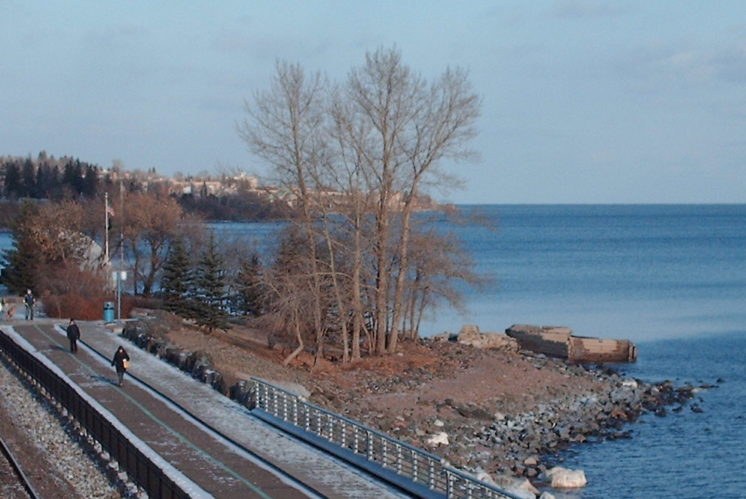
The timber structure washed ashore near the Vietnam Veterans and Korean War memorials on Nov. 28, 2006. Lake Superior storm waves pushed it down the shoreline toward Canal Park on April 11, 2008. (Photo by Paul Lundgren)
“You look at timber prices right now, the scarcity of bigger timber — it’s super valuable,” he said. “That’s why we work with the old growth, reclaimed stuff. There’s value in the pure dollars and cents of it, but there’s also value in the strength to build with and the beauty of the grain structure.”
Garrett said the wood used to construct the original Lakewalk boardwalk in 1986 is also valuable. The mile-long boardwalk from Canal Park to Fitger’s Brewery was built with ipe wood, an extremely durable wood harvested in Central America and the Brazilian rain forest.
The wood could be reused for sculpture, plaques, benches or artwork throughout the city.
“That’s what I’d like to do, get my hands on some of it and do a project with the city,” said Garrett. “Then everybody could have benefitted from it.”
Van Daele said the city did not destroy the boardwalk wood.
“We do have some projects that we will be using some of it for that we will be announcing soon,” she said. “We salvaged as much of the old wood as we could.”
Any remaining boardwalk wood will be auctioned to the highest bidder.
Recommended Links:
Leave a Comment
Only registered members can post a comment , Login / Register Here


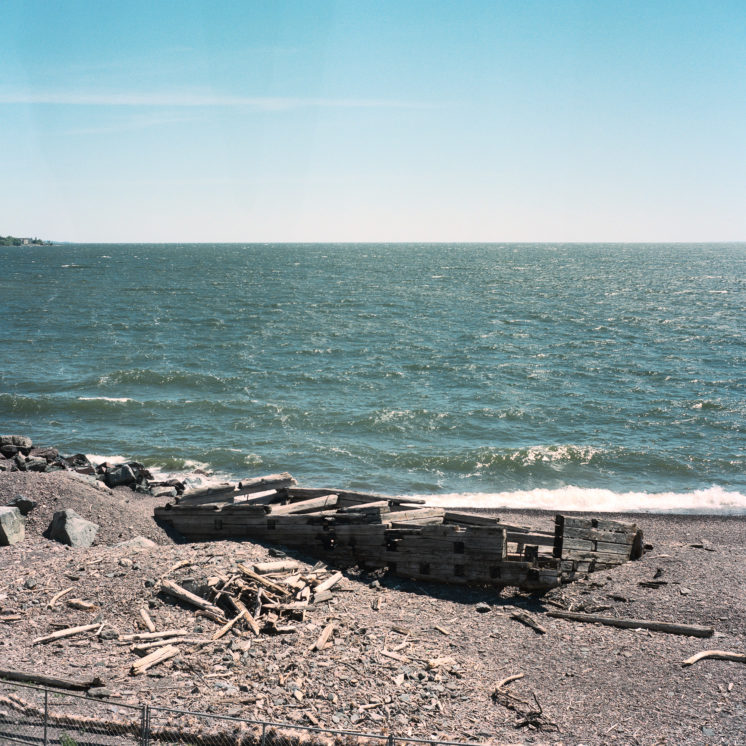












No Comments